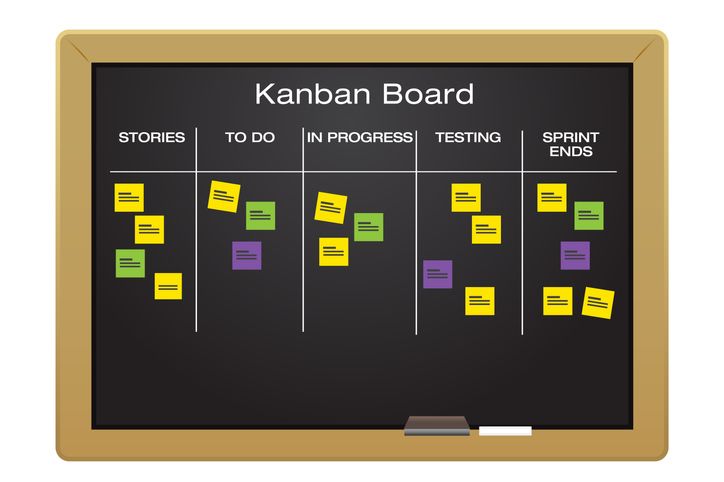
Kanban: A Rising Project Management Tool to Streamline Workflow
Kanban: A Rising Project Management Tool to Streamline Workflow

Last Updated October 11, 2023
Kanban is emerging in project management as a highly effectively tool to enable better control over resources, a clearer picture of workflow and on-demand scheduling.
Increasingly, project managers are embracing hybrid project management, combining popular planning approaches from Waterfall and Agile through Kanban project management to streamline projects and manage tasks based on priority as well as reduce wasted resources and time.
A 2017 article published by the Project Management Institute titled, “A Little Bit of Both,” cited KPMG’s 2017 Agile Project Delivery survey, which stated that 85% of respondents said that hybrid project management will soon be normal practice. It also stated that nearly all the organizations surveyed practice hybrid project delivery by combining agile and traditional project delivery concepts.
What is Kanban?
Kanban was conceptualized in the 1940s when Taiichi Ohno, an industrial engineer at Toyota, tried to mirror the shelf-stocking approach he observed in the supermarket. Toyota employed this approach as a framework for a “Just-in-Time” production system in its manufacturing. The idea is to do only what must be done, when it is needed and to the degree it is needed. The Kanban approach isn’t limited to only production and has been widely adopted in project management and Lean Six Sigma across industries to design a visual, simple workflow that keeps each team member working on the most important items at the right time.
This visual workflow enables teams to see who is working on a task, which elements of the project are being handled and how the team’s capacity is dispersed. This pull system, whereby work is pulled through completion, either by a team member or a machine, avoids needlessly pushing tasks through based on a pre-established schedule.
In practice, this is the difference between a software QA running because it was scheduled to do so Tuesday morning and a software developer signaling the QA team when the development is complete, even if that’s earlier or later than originally planned. A Guide to the Project Management Body of Knowledge (PMBOK® Guide) calls this “on-demand scheduling.”
How to Use a Kanban Board
Unlike previous eras which involved an actual sign board, the digital age has helped advance Kanban adoption, as widely available online tools enable project managers in any industry to adopt this practice via a virtual board. With this visual management tool, each card represents an individual task, and cards are organized by stage (or section), priority and delivery. For example, stages might be set up as:
- Pending
- In progress
- Completed
As workflows update, the Kanban board updates as well, providing a real-time snapshot of the project’s individual tasks. According to Villanova’s Applications of Agile Principles course, by defining work-in-progress limits, the volume of the work itself is controlled to ensure streamlined production, increased efficiency, better visibility into the process in the moment and less waste.
Kanban Across Methodologies
According to the Applications of Agile Principles course, Kanban project management doesn’t have to be incorporated with Agile or Lean Six Sigma methodologies (though it is typically associated with these approaches). instead, it is designed to serve as a useful tool for project planning and prioritization regardless of methodology. This aligns with goals project managers should strive to:
- Allocate resources effectively – A visual understanding on tasks enables project managers to assign team members who are the best fit for the task and oversee team and individual capacity.
- Manage workflow efficiency – With Kanban, project managers can see the entire sequence of tasks that make up the total workflow, and assess how tasks relate, along with the order in which they need to be produced.
- Reduce waste – It isn’t only Agile project managers who are driven to reduce waste – effective project managers are driven to manage costs and identify and eliminate defects and waste. Kanban boards allow project managers to identify likely waste, either through process breakdown, over-leveraged team members or gaps in processes.
Why Hybrid Project Management?
Traditionally, project managers employed a more sequential approach to scheduling, specifically used in the Waterfall methodology. With Waterfall, any missed item in a sequence impacts future workstreams. In today’s environment, with organizations scrambling to rapidly develop new technologies and complete strategic projects, that careful sequence isn’t always possible. Enter Agile project management, where work is conducted – and adjusted – in short cycles called sprints.
While both methodologies have their place in business, in many cases, such as high-risk, long-term or complex projects, or groundbreaking development, neither methodology is a perfect fit. With a hybrid approach, project managers can borrow the best of both methodologies to achieve success – and Kanban can support orchestrating those pieces. According to PMI’s “A Little Bit of Both” article, project professionals need to understand the value of each project approach so that they can apply either method to the right project or project stage.
Using Kanban
The practice of visualizing can be extended beyond a single project scope and leveraged at a department or portfolio level to take a more strategic view. Remember, at any level, the same Kanban practices apply:
- Workflow visualization
- Limited work-in-progress
- Workflow management
- Clear processes
- Open feedback loops
- Continuous collaboration and improvement
Regardless of the project management methodology, project managers can leverage Kanban to manage tasks, and continuously improve the flow for more efficient, timely and successful projects.
PMBOK is a registered mark of the Project Management Institute, Inc.




